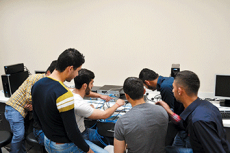Actuaries vs. Financial Analysts
By Gaby Yazigi
Editor-in-Chief
Globe University Guidance founder and GM
Actuaries vs. Financial Analysts: Understanding the Key Differences
Introduction
In the realm of finance and risk management, two professions that often take the spotlight are actuaries and financial analysts. Both of these roles play vital parts in the decision-making processes of organizations. However, they possess distinct skill sets and focus areas that set them apart. In this article, we will delve into the differences between actuaries and financial analysts, shedding light on their unique contributions and the specific tasks they undertake.
Actuaries
Actuaries are professionals who specialize in evaluating and managing risk. They possess deep knowledge of mathematics, statistics, economics, and finance, which they use to assess the financial implications of uncertain events. Actuaries frequently work in insurance companies, where they analyze data to determine the likelihood of risks and develop strategies to minimize potential losses. They play a crucial role in setting insurance premiums, designing pension plans, and ensuring that companies maintain solvency.
Key Responsibilities of Actuaries
1-Risk assessment and modeling
Actuaries use complex mathematical and statistical models to analyze data and evaluate the potential risks associated with insurance policies, investments, and pension plans.
2-Pricing and underwriting
Actuaries set insurance premiums and determine the factors affecting policy costs, such as age, health, and occupation, to ensure that the pricing accurately reflects the associated risks.
Financial Analysts
Financial analysts, on the other hand, focus on studying market trends, evaluating investment options, and providing guidance on financial decision-making. They work in various industries, including banking, investment firms, and corporations. Financial analysts aid in evaluating the financial viability of different projects, identifying investment opportunities, and assessing the financial health of organizations.

Key Responsibilities of Financial Analysts
- Investment analysis
Financial analysts research and evaluate investment opportunities, analyzing financial statements, market trends, and economic indicators to provide recommendations on potential investments.
- Financial forecasting
Financial analysts prepare financial models and projections based on historical data and market trends to help organizations make informed decisions about budgeting and strategic planning.
- Risk assessment
Financial analysts assess the risks associated with investment portfolios, offering insights into potential market fluctuations or economic uncertainties that may affect an organization’s financial stability.
- Report generation and communication
Financial analysts generate reports and presentations to communicate financial information, performance analysis, and investment recommendations effectively.

Different Focus Areas
Although actuaries and financial analysts share some common skills, such as data analysis and financial modeling, their work primarily focuses on different aspects of risk management and financial decision-making.
Actuaries specialize in areas such as insurance, pension planning, and risk assessment, with a strong emphasis on complex mathematical modeling and statistical analysis. On the other hand, financial analysts provide market insights, investment advice, and overall financial analysis to support decision-making in various industries.

Conclusion
In summary, the roles of actuaries and financial analysts differ significantly in terms of their areas of expertise and responsibilities. Actuaries are experts in risk assessment, insurance, and ensuring solvency, while financial analysts specialize in investment analysis, financial forecasting, and offering insights into financial decision-making.
Both professions play vital roles in an organization’s success, as they contribute their unique knowledge and skills to navigate the complexities of the financial world. Understanding the differences between actuaries and financial analysts can help individuals pursuing these career paths make informed choices and organizations to leverage their expertise effectively.






















